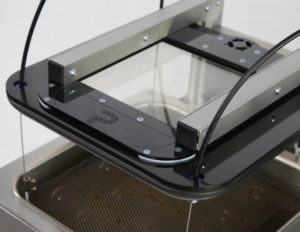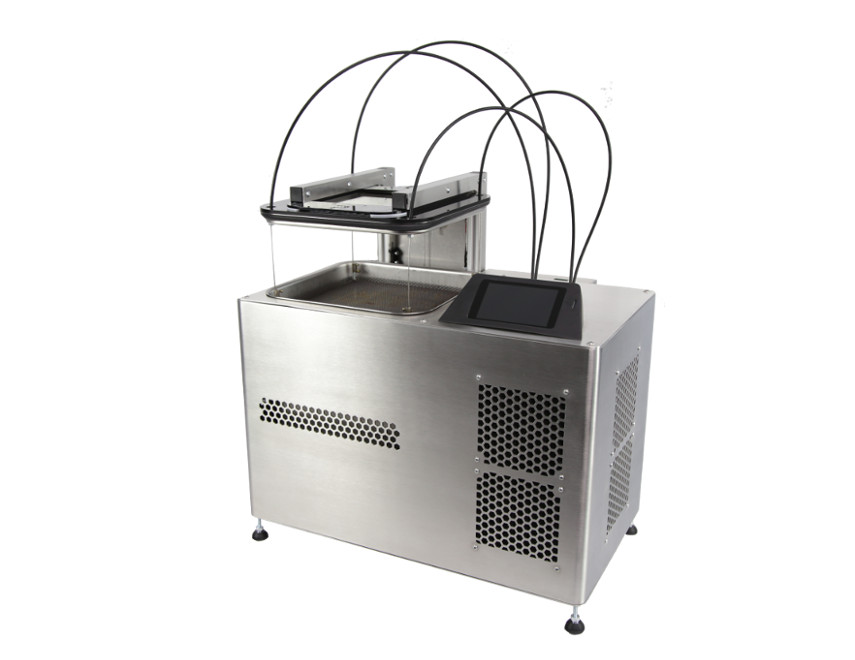The Vapor Phase One offers development engineers as well as small to medium sized prototyping service providers one of the most gentle soldering processes in the industry. In contrast to infrared or convection processes, assemblies with high thermal mass, fine pitch structures or temperature-sensitive components can be processed without any problems.
A short introduction to vapor phase soldering
Vapor phase soldering – also called condensation soldering – is based on similar physical principles to a heat pipe. An inert liquid is brought above its boiling point, causing a vapor phase to form just above the surface. This liquid is a specially developed medium called Galden® that boils between 230 °C and 240 °C, depending on the type. This newly formed vapor transports energy from the heat source to one or more “heat sinks”. In this case, these heat sinks are your PCB, your components and the applied solder paste.
The vapor condenses on the cooler surfaces first, so it transports a greater amount of energy to those areas and gently heats your board. The solder paste melts as soon as your PCB reaches the appropriate temperature. Also, the maximum temperature it can reach is limited by the boiling point of the Galden®.
Fast temperature profiles: The design of the Vapor Phase One and Two allows the user to run fast temperature profiles using a height-adjustable PCB lift.
Custom soldering profiles: Our vapor phase soldering systems can import individual soldering profiles via an SD card. Based on these profiles, heating power and lift position are adapted to different solder pastes and PCB technologies.
Quick Cool: This feature shortens the process time and ensures minimal loss of Galden® when the board is removed.
Anti Condensation: With the vapor phase technology, the soldered assembly is generally covered with Galden® residues. Our assembly is kept at a temperature of 120 °C after the soldering process, thus leaving hardly any residues.
Lifting lid: The lid to the process chamber lifts automatically to simplify the insertion and removal of PCBs. This also helps to preserve the heat transfer medium.
Viewing window: In addition to a screen that displays real-time temperature data, the Vapor Phase One & Two features a viewing window with internal lighting that allows you to see into the process chamber.
Safety: The Vapor Phases have a variety of safety mechanisms implemented in both software and hardware to ensure safe operation and soldering process.
Open Source Hardware: We published the source code of the firmware as well as schematics and construction files in our GitHub repository PCB-Arts/vaporphaseone.



